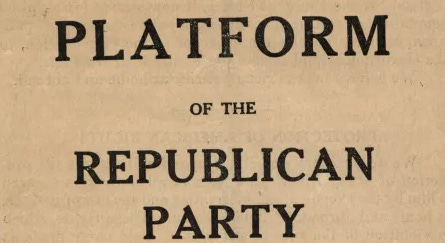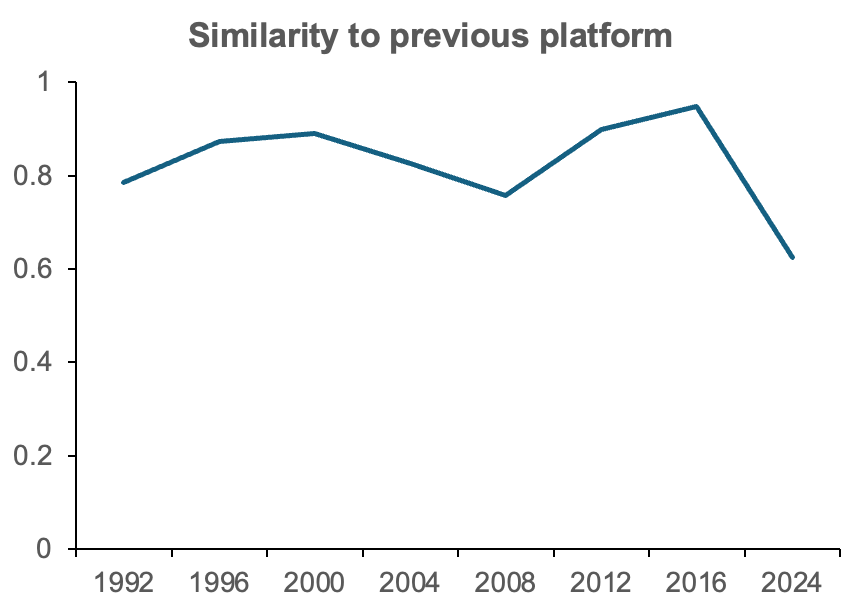Earlier this week the Republican National Committee released its platform for 2024. This was an unusual document produced in an unusual way, but I wanted to focus a bit on what made it such a departure.
As Barry Burden has noted, the platform was unusually short, coming in at roughly 5,000 words, while most other modern national party platforms have been at least five times that length. This in itself is not an indictment; platforms are guidelines rather than specific policy proposals, and they are designed to give us an idea about what the party’s priorities are. One thing notable about state party platforms is how widely they vary in length. Part of that is just a reflection on how specific state party leaders want to be, but it’s also related to the number of voices in the room when the platform is being crafted.
That seems to be relevant for the RNC in 2024. In previous years (well, prior to 2020), platform creation was part of the national convention, and it was a fairly open process. You could watch the platform being created on C-SPAN, with representatives from different groups coming before the platform committee and requesting edits, additions, or subtractions to the document.
By contrast, the 2024 platform was created behind closed doors. It was, in many ways, more of a campaign statement than a party manifesto, designed to signal support for Donald Trump and his agenda. However, it offers a wider range of policy stances than the RNC’s 2020 two-page memo pledging support for Trump in lieu of an actual platform. The secretive process for creating the 2024 platform makes it hard to know just how many different groups were in the room, but it doesn’t seem like many.
So just how different is this platform from previous RNC platforms? One way to measure this is to do a text similarity analysis of the platforms (using a cosine similarity approach). Basically, this tells us how identical the words are from one platform to the next. It ranges from 0 (no similarity at all) to 1 (if the two documents are identical). The chart below shows how each Republican platform since 1992 compares to the one that preceded it.
As we can see, the 2024 document is a significant departure from the one in 2016 – just .625 in similarity between the two. That’s the lowest similarity score by far. Part of this is a reflection of events that have changed in the intervening eight years.
For example, the overturning of Roe v. Wade and an end to federally funded abortions have been decades-long GOP priorities. All of a sudden they need to change the way they describe abortion. And it’s become a delicate issue within the party, as the question of whether to advocate for a nationwide ban is a deeply divisive one. We can examine how the platforms’ mentions of abortion have varied.
Keep reading with a 7-day free trial
Subscribe to Tusk to keep reading this post and get 7 days of free access to the full post archives.






